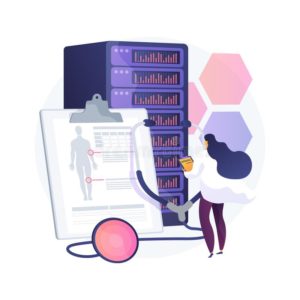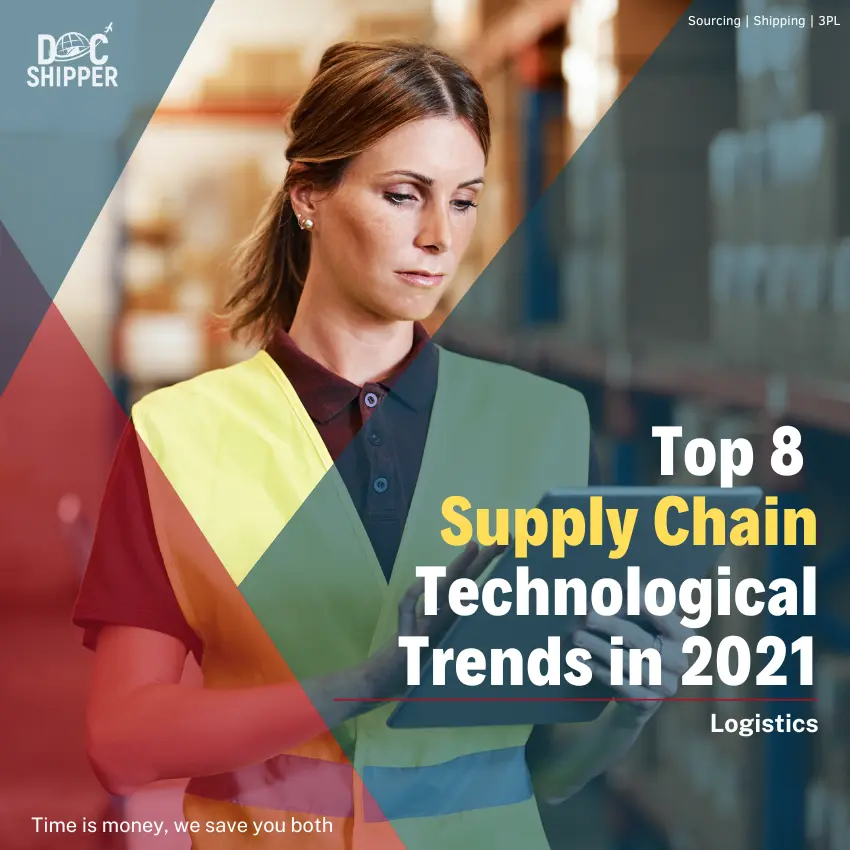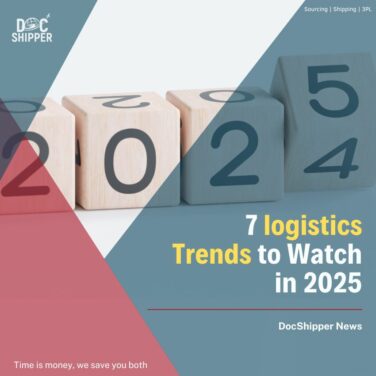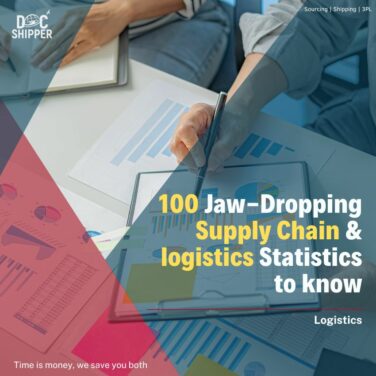Due to the global pandemic (COVID-19), the supply chain and logistics were the affected sectors back in 2020. Companies have been forced to search for new strategies and enhancements to adapt to the customers’ sudden change of behaviour. All this is due to the domination of e-commerce and online purchase, which made them unable to resist the technology and to enhance their digital supply chain management and business performance.
This did generate the appearance of new technological trends that would have an impact on the supply chain in the upcoming years.
This article will present to you the different supply technological trends that are currently taking over in 2021 that will help it shape up and increase efficiency according to Gartner.
Artificial Intelligence and machine learning
Artificial intelligence (AI), aims to improve operational performance in the supply chain by automating processes that allow us to predict demand, plan production or predictive maintenance.
For the past several years, companies did integrate AI solutions including intelligent transportation, route planning, and demand planning in their operations. It doesn’t just stop there, it can also help reduce the risks through the capacity to analyse and correlate faster data of high volumes.
It is currently making a difference in logistics. Shippers, carriers, suppliers, and consumers are benefiting from nowadays logistics technology trends. It even helps deal with long-standing challenges. 61% of businesspeople reported reduced costs, while 53% stated increased revenues after implementing AI into their supply chains.
It is very much expected to spike, as AI combined with human intelligence leads to an augmented intelligence that can even be superior to AI alone.
Data Standards and Advanced Analytics

Thanks to the collected data used by organizations, technologies are now capable of good decision-making that is related to planning, sourcing or even transport of equipment and materials.
For instance, new data standards are finally being conceived in container shipping. All of this is thanks to the advent of the Digital Container Shipping Association (DCSA) in 2019.
The DCSA creates common information technology models for digitalization and interoperability to make the shipping sector more efficient for both parties, shipping lines and customers.
Though, the data standardization movement within the container shipping area, and it will take time for the association to expand new standards covering different sub-sectors of shipping.
Other logistics fields still have work to do when it comes to solving the data inconsistency problem, which is leading many start-ups to focus on creating predictive and advanced analytics platforms as a solution. The usage of that data for advanced analytics and predictive optimization is allowed by the logistics start-ups that are advocating bigger companies to cleanse and digitize their data.
DocShipper Tip
DocShipper Advice : For all your logistics operations, don’t hesitate to contact our DocShipper agents! Our logistics department will be happy to help you with all your requirements.
Personalized customer experience
Thanks to the constant update of data collection, users are always expecting a personalized purchase experience depending on their personality and preferences.
The AI program did allow the development of the collection of such data to design a friendly and targeted customer experience.
Personalization, once restricted mainly to targeted offers, now stretches to the entire customer experience. This means that customers want personalization during their synergies with a retailer with various, personalized touchpoints that permit them to allocate their time and money according to their preferences.
Ensuring that a customer’s shopping experience is hassle-free during the entire journey is a priority and can be critical to a business’s success. Collecting customer preferences by using relevant programming can help businesses operate and ease this pressure.
Digital Twins
While prescriptive models operate with real data, a digital supply chain twin takes this capacity further in that inputs are supplied into the model in real-time. As a customer’s purchase is processed, the order and associated transactions are automatically fed into the supply chain digital twin.
Digital twins make it possible to design in digital form all the physical objects included in the processes: products, customers, markets, distribution centers and warehouses, factories, but also financial elements, weather, etc.
The possible use samples for digital twins in logistics are limitless. In the freight sector, digital twins can be used to assemble product and packaging data and use that information to identify potential weaknesses and recurring trends to improve future operations. Warehouses and facilities can also use the technology to produce accurate 3D models of their centers and experiment with layout modifications or the introduction of new equipment to see their impact, risk-free.
Furthermore, logistics hubs can generate digital twins and use those to test out different scenarios and increase efficiency. In addition to that, delivery networks could use the technology to implement real-time information that will improve delivery times and further aid autonomous vehicles in their routes.
Immersive experiences
It takes us into a dissimilar or augmented reality, improving daily life through making it more appealing or satisfying all this through technology. It’s often used when one or more technologies are being used such as Virtual Reality (VR), Augmented Reality (AR) and Mixed Reality (MR).
- Virtual reality is once a digital setting utterly replaces the physical setting. An up-to-date example would be a video game played with a virtual reality headset. In VR, there isn’t a sense of correct setting and no interaction with it.
- Augmented reality technology is the superimposition of virtual content over a live-stream image of the reality. This technology helps provide additional information while finishing tasks within the real world.
- As the name implies, mixed reality is a combination of VR and AR. Whereas in some ways, MR may be regarded as an advanced form of AR, the technology enables users to entirely interact with virtual items superimposed on the real world, such as setting a virtual piece of furniture in your home.
The application of immersive technologies to the supply chain offers the potential for fewer errors, quicker order process and less manual input. As early as 2018, Gartner highlighted the turbulent potential of this technology. Existing examples show the potential of this technology. Existing examples show what percentage corporations square measure already victimization immersive experiences to support their supply chain. Whereas Gartner presently places this technology at the height of inflated expectation of their promotion cycles, it’s clear the technology is maturing quickly and is probably going to become virtually indispensable within 5 to 10 years.
DocShipper Alert
DocShipper Advice: You can count on DocShipper if you’re in need of any packaging and protection service to relive. Do not hesitate to contact us.
Autonomous Vehicles
Here, we talk about both self-sufficient vehicles (forklifts, trucks, etc.) and drones, piloted using artificial intelligence algorithms. Such devices provide interesting opportunities in warehouses, such as to decrease the duration of inventories thanks to drones which photograph and identify products in stock.
There are numerous opportunities to improve productivity and cut back the costs by adding autonomous vehicles to your supply chain ecosystem. We might not be witnessing them on the streets but, autonomous trucks are already in operation at airports, seaports and container bases. Autonomous forklifts and robotic arms are also being widely used in modern warehouses to function as flexible ‘conveyor belts’.
As regulations substitute to allow wider use, we could soon see accelerated transformation of the role that organizations play in the supply chain, as Original Equipment Manufacturers (OEMs), manufacturers, suppliers and service providers all embrace new opportunities for improving their addition to the end user and the supply chain ecosystem itself.
Interested in our services? Need personalized information? Our experts will answer you within 24 hours
Warehousing technology
The technology is turbulent we can witness daily and rapidly progressing in this sector that is affecting all the divisions of the economy. To keep up, warehouses are equipped with the newest technologies to keep up with manufacturing, production and most importantly the consumer’s demand.
We are not living in the era of smart warehouses that are automated to ensure the continuous improvement of productivity.
Businesses are always searching for efficient and accurate solutions to implement to give flexibility and capability to their employees and their process.
Automating warehouses provides companies with a reduction in human error, lower risk of injury and the optimization of the throughput on one hand but on the other hand, it decreases your overheads, adds adaptability to your hours of operation and enables you to be more precise in assessing your workforce demands.
A Warehouse Management System (WMS)
For all your critical warehouse data, a WMS should be comprehensively consolidated into one easily accessible platform, to give select members of your supply chain a crystal clear view of your operations, quick reporting, instantaneous statistics and finally precise planning capabilities.
The usage of this system should perfectly complement the company’s other autonomous processes and provide the listed benefits:
- Accurate demand forecasting.
- Reduced labour costs due to efficient labour accusations.
- Streamlined warehouse processes.
- Optimized warehouse layout.
- Improved inventory and pick accuracy.
- Decreased time between picks.
- Improved warehouse flexibility and responsiveness.
- Improved warehouse safety and security.
- Improved customer service and supplier relationship.
- Implementation of an ongoing optimization strategy.
Automated Picking Tools
Picking is either conducted or supported by using material handling equipment in high-volume; put-to-light, automated storage and retrieval systems (ASRS), and goods-to-man.
An almost perfect picking rate is what your warehouse will be benefiting from with the inclusion of automated picking elements into your warehouse. There exists a large number of helpful tools for this process, such as pick-to-light and voice automated picking. Always keep in mind that the WMS is designed to streamline your warehouse operations. Instead of manually having to calculate the best locations, storage media, and pick paths for stock, your WMS does all the heavy lifting for you.
Automated inventory control platforms
Inventory represents an important issue for every business that comes with high costs, but with relying on the automation of this cycle everything will be much easier to manage and most importantly that it would cost a lot lesser the old-fashioned way.
Although the existence of this innovative solution, there are still some companies that still rely on pen and papers to manage this process. According to Motorola, in 2018 an average of 41% of warehouse facilities still relied on this manual cycle-counting process.
These platforms enable you to automate stock counting, with data synthesized quickly for instant and reliable reporting that can be obtained remotely.
IoT Implementation
The Internet of Things goal is to guide you to the perfect control of all the moving parts of your warehouse. It helps you reduce the risk and avoid the mistakes or accidents that might generate losses in the supply chain by early detection.
Sensors in the warehouse can control temperature, moisture, and other situations. Data coming from shipping transports, vehicles, and the outputs themselves can be blended to decrease fraud, duplication, alteration, and spoilage.
This system synchronizes all your data whether it’s automated or manual, it all goes into an easy-to-access network that helps optimize the inventory control, labour planning and consumer experience.
DocShipper info
DocShipper Advice: For all your logistic operations, don’t hesitate to contact our DocShipper agents! Our logistics department will be happy to help you with all your requirements.
Blockchain
Companies are now operating on integration of the Blockchain in their supply chain system. Although it’s only getting started, the previously mentioned trend is responding well to strong challenges, especially in the context of very complex supply chains on a global scale.
Blockchain is an open record of transactions distributed among computers in an assigned network. Since everyone on the shared blockchain has access to the same record of transactions, there is full transparency, which makes it impossible for users to hack or trick the system, and therefore eliminates the necessity for third-party involvement. In the logistics industry, this could make it way simpler for different shippers to share sensitive data and corporations could create trade finance and supply chain solutions, like that of Maersk and IBM’s blockchain joint venture called TradeLens.
Conclusion
With the technology evolvement, and the global supply chain stands at the apex of a significant metamorphosis. This metamorphosis will drill homes with IoT-enabled devices and leverage the combined assets and technology to redefine how supply chains function. The openings for progression are unlimited.
FAQ | TOP 8 SUPPLY CHAIN TECHNOLOGICAL TRENDS IN 2021
The ICT information technologies' implementation in logistics empowers companies and enterprises to improve e-logistics solutions. On the other side of the coin, the expansion of e-logistics could have been helpful in the developments, including decreasing the chains of global supply and supply logistics during the coronavirus (Covid-19) pandemic.
The disadvantage of reverse logistics involves countless added transactions than the forward supply chain and the multiple actions linking to product returns will traverse beyond several operative divisions; finance, sales, customer service, warehouse, repairs and shipping. For the mainstream of these parties, product results are likely seen as much more of exasperation rather than a priority.
Customer knowledge is an essential aspect of every supply chain as it can serve as an operator to drive the supply chains and logistics towards the path of sustainability, and producing new products/services. We should recognise that the survivability of supply chains is depending on end-user's satisfaction and therefore, I think it could be a good subject to examine within your project.
Implementing these new technological trends in your supply chain process can provide you with various benefits such as real-time and actionable data for a better consumer experience. It can also provide you with clear visibility across your supply chain through software that consolidates all aspects enabling you to digitally organize inventory data, monitor and manage shipping and tracking information, and create electronic invoices with ease.
Read More
You might be interested in these articles
DocShipper info: Do you like our article today? For your business interest, you may like the following useful articles :
- Coronavirus (Covid-19) impacts on import/export business
- How does Coronavirus impact international supply chain?
- 💡How to find a good product to sell?
- How to find your reliable supplier for your business? [Fair Trade Guide]
- AliExpress | Use the Chinese panacea to sell your products online
- How a sourcing strategy can rocket your margin?
Need Help with Logistics or Sourcing ?
First, we secure the right products from the right suppliers at the right price by managing the sourcing process from start to finish. Then, we simplify your shipping experience - from pickup to final delivery - ensuring any product, anywhere, is delivered at highly competitive prices.


Fill the Form
Prefer email? Send us your inquiry, and we’ll get back to you as soon as possible.
Contact us






